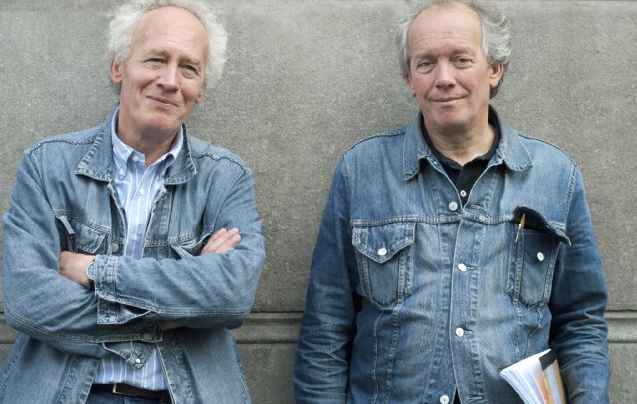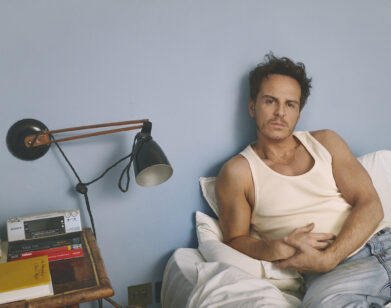The Brothers with a Camera: Jean-Pierre and Luc Dardenne

JEAN-PIERRE (LEFT) AND LUC DARDENNE. PHOTO COURTESY OF CHRISTINE PLENUS
A boy in search of family may be a story we’ve seen many times, but rarely is it so truthfully raw as in The Kid with a Bike. Directed by Belgian filmmaking duo and brothers, Jean-Pierre and Luc Dardenne, the film follows Cyril, who attempts to find a new home after his father abandons him. In a bit of genius casting, Cyril is played by newcomer Thomas Doret. As Cyril, Doret is full of rage but unable to verbalize it. It isn’t until he meets his fairy godmother—in the form of a hairdresser named Samantha, played by Cécile De France—that he is able to express his fears. With this film, the Dardenne brothers, who never stray far from their Belgian roots in film, craft a story that feels almost like a real-life fairytale. We caught up with both Jean-Pierre and Luc Dardenne to ask about directing a non-actor and whether they would ever film outside of Belgium.
GILLIAN MOHNEY: You mentioned at the screening that this was based on a true story from Japan about an abandoned boy. What about that story struck you?
JEAN-PIERRE DARDENNE: The story sort of obsessed us. We talk a lot about this Japanese boy between the two of us. And we never were really able to make a story of it, except that it was a story of abandonment. It’s when Samantha came on the scene when we started talking about how this kid could be saved… In real life, what happened to this Japanese boy is much less happy; he’s in prison.
MOHNEY: Thomas is amazing as Cyril, in spite of never having been in a movie before. How do approach directing a child with no acting experience?
LUC DARDENNE: It wasn’t hard. You don’t want to do a lot of directing when someone has never acted, particularly a child. It has to be like a circus, where you do a lot of physical work—you know, running, falling, jumping, climbing the trees. Then there you throw in a little bit of dialogue and start to grow a little bit more confident. But you have to start off with a kid who has talent. Otherwise it’s not possible. Then the other actors come along and they give him more confidence.
MOHNEY: You’re famous for doing all your films in Belgium; what about this area draws you in?
LUC: The murderer always comes back to the site of the crime—I do believe that—to understand, “What did I do?” And to also get pleasure from the fact that no one understands why he did that. But of course, if you keep coming back, someone is going to expect, “That’s the murderer.”
JEAN-PIERRE: So maybe we’ll leave the site of the murder and go elsewhere. You know, there are all kinds of reasons; we grew up there. That’s where we had first emotions about certain things.
LUC: But at the same time, there are so many filmmakers that don’t set their films in the place they were born or grew up. I don’t know why, that’s just the way it is.
MOHNEY: Do you think you would ever go somewhere else to do a film? Would you ever want to go somewhere really exotic?
JEAN-PIERRE: That’s bad for film. No, the film can be fantastic or [you can go] to really beautiful places. You have to be very careful.
LUC: It’s true, the landscape gobbles up the movie.
MOHNEY: You mentioned at the screening last night that this “happy ending” was a result of old age. Do you think this film is happier than your others?
LUC: I don’t think we ever make movies that end in a sinister manner. Our characters are always saved. But in this one it’s more obvious that’s true. We knew that at the end, this character had to be saved, and he had to be calmed and appeased. Because the worst-case scenario is not always necessary.
MOHNEY: You don’t have much music in your films, but in this film the music is used in a really amazing way. What was your approach?
JEAN-PIERRE: Well the music came because we thought [it] can put in what is missing for the boy. The music doesn’t come from within the film or what’s happening with the characters. It’s sort of the above the characters… In a way, it sort of sections the movie into chapters. Every time there’s music, we start with another movement, another character.
MOHNEY: Does anything in the filmmaking process surprise you now?
LUC: Every day when I get up in the morning, I don’t necessarily feel like going on the set. I go there hoping every day that I’m going to be surprised. Otherwise I wouldn’t go. I don’t think it’s just me. I think it’s everybody. I think that’s the pleasure of the shoot. If it’s to apply something that one already knows, than you can stay home and have someone do it.
JEAN-PIERRE: When you work with an actor like Thomas, every day is a surprise. He’s never been filmed. So every day, it’s as if it’s the first time he was being filmed. It’s fantastic, it’s wonderful, and other times you go home and you say, “I was right, I should have stayed home.” You’re not always in good shape, but that’s why there’s two of us.
MOHNEY: How does the storytelling proccess work between the two of you?
JEAN-PIERRE: We have to make the same movie, that’s for sure. We talk a lot, and we try to feel something where we go “Okay, that’s it.” It’s the same thing as a jazz musician, where all of a sudden they go, “Okay, that’s it.” You know, something that happens between them and everybody feels it take off.
MOHNEY: After doing this for so long, what kind of story or idea draws you in and makes you want to make a film?
JEAN-PIERRE: I don’t know what it is. I don’t know what it will be. It could be a character. It could be story. It’s really hard to say.
MOHNEY: You started out doing documentaries—would you ever go back to that?
JEAN-PIERRE: No, absolutely not.
LUC: Well, you can document stones.
JEAN-PIERRE: Or a fish or something. [But] that’s been done, and we’re not good swimmers. I prefer to invent a story.
THE KID WITH A BIKE IS OUT IN LIMITED RELEASE THIS FRIDAY, MARCH 16.






